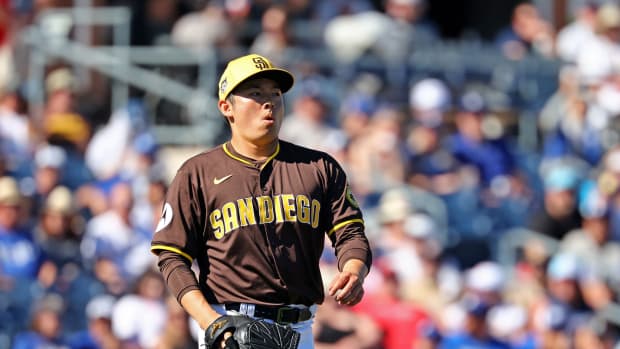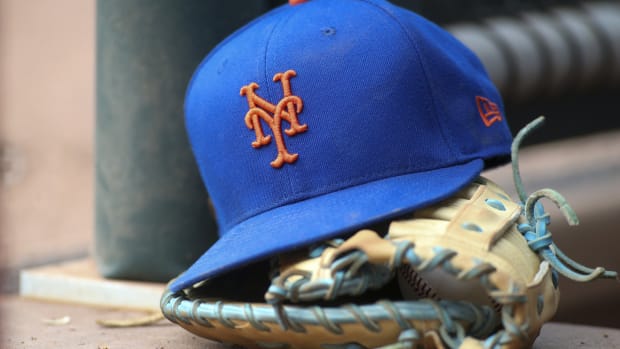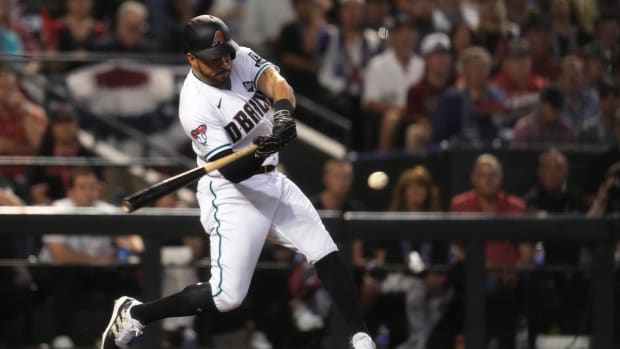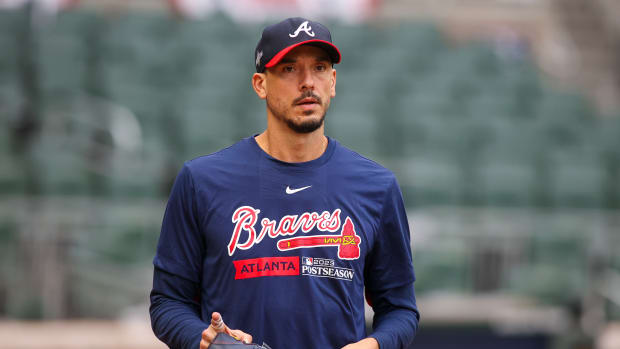NLCS Preview: How Do the Brewers Plan to Limit the Dodgers' Firepower?
The Brewers were last in the NLCS—and the playoffs, in fact—seven years ago, in 2011, when Prince Fielder and Ryan Braun slugged their way to a 96–66 record. They lost in six to the Cardinals, who pounded Milwaukee’s suspect pitching. The Dodgers, meanwhile, are in their third straight NLCS (and fourth in six years). Last year brought their first win in that bunch; they beat the Cubs in five before losing to Houston in the World Series.
Is any of that history relevant? Perhaps not at first glance. But Milwaukee’s past loss may offer a window into what it is they’ll need to win. In that series, St. Louis’s starters struggled mightily, surrendering 19 runs in 24 1/3 innings of work. So what did the Cardinals do? They called upon their bullpen for the other 28 2/3 innings. Lance Lynn pitched in five games that series; Jason Motte, Fernando Salas, and Octavio Dotel pitched in four apiece.
At the time, the Redbirds’ pitcher usage seemed to reflect the mania of Tony La Russa—now it just seems ahead of its time (if still a little manic). The Brewers enter the series with less starting pitching than those Cardinals but a better bullpen. Josh Hader, Jeremy Jeffress, Corey Knebel and Joakim Soria should log an innings total between them comparable to Milwaukee’s starters if the Brewers are to have any shot at winning. Manager Craig Counsell hasn’t spelled out his precise usage plan, but he told reporters on Thursday that “it's no secret that we're going to use our pitching a little differently than traditionally, than the traditionalists would like.” That’s good news!
The problem is, the Dodgers can really, really hit. LA finished second in the NL in OBP and led the league in slugging and homers and walks—they scored more runs in 2018 than they did during their 104-win 2017. They spanked Braves pitching in the division series. Even if Counsell leans on his lefties (Gio Gonzalez and Wade Miley as starters; Hader and presumably Dan Jennings in the bullpen, though Milwaukee hasn’t announced its final roster) to neuter Joc Pederson, Cody Bellinger, and Max Muncy, well, the Dodgers still have Manny Machado, Justin Turner, and David Freese. Milwaukee’s starters, no matter their handedness, will struggle to keep this group in check for even four innings a night.
Then again, it would be a mistake to count the Brewers out of any slugfest, especially since the Dodgers will be starting lefties—Clayton Kershaw, Hyun-Jin Ryu, and Rich Hill—in three of the first four games. (Walker Buehler, who started the Dodgers’ only division series loss, will be the lone righty.) Milwaukee’s best hitters, even the lefty Christian Yelich, hit lefties well. Against lefties this year, Yelich OPSed .983; Lorenzo Cain, .979; Jesus Aguilar, .929. Aside from them, though, Travis Shaw and Mike Moustakas can hit righties only, and Orlando Arcia, Hernan Perez and Jonathan Schoop can’t hit at all.
If Milwaukee’s bats and bullpen deliver, these games will likely hinge on the middle innings, the rocky fifths and sixths and sevenths when Dave Roberts will be deciding whether to pull his starter and when Milwaukee’s starter will have long since hit the showers. While the Dodgers have a sure-thing closer in Kenley Jansen, their middle relievers are, compared to Milwaukee’s, a motley crew, from starters Kenta Maeda and Alex Wood to Ryan Madson (of the 5.47 ERA this season) and perennial meltdown candidate Pedro Baez.
The Dodgers have all the pitching they needs. The outstanding question is whether Roberts will be able to deploy it artfully. The Dodgers’ pen dazzled in the division series and in last year’s NLCS; in the World Series, not so much. With all that, though, give me L.A. in six: the Brewers are a fine ballclub, but they’re not the Astros, and there’s a lot of pressure in the NLCS, but it’s not the World Series.



































